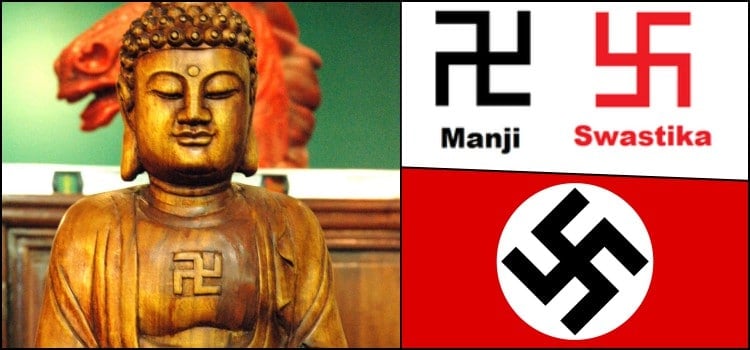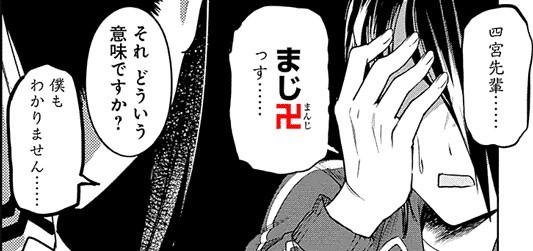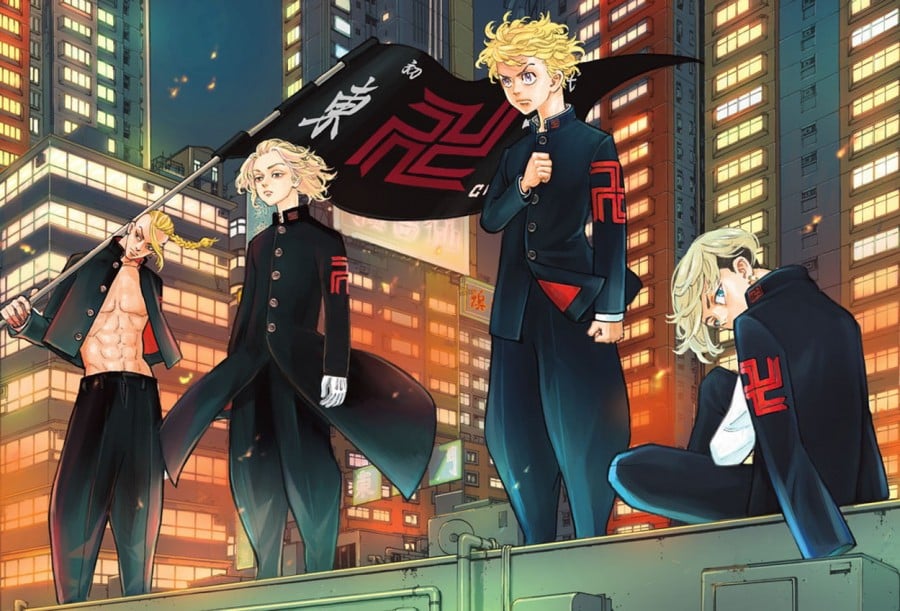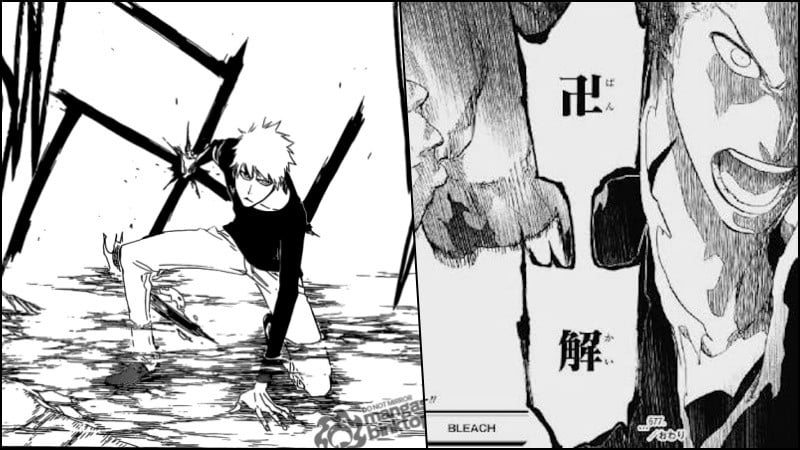Did you know that the swastika which in Japanese is called manji often appears in anime and manga? In this article, we will see various instances of the swastika in Japanese Culture.
In the West, swastikas are often censored, criticized and viewed with hateful looks because of Nazism. Do anime and manga face it the same way?
What some do not know is that the swastika actually has nothing to do with the atrocities committed by Nazism, there are different swastikas called manji that are religious symbols of Buddhism.
We even wrote an article talking about the true meaning of the suástica budista e nazista, if you haven't read it, we recommend reading it, as we won't talk about the meanings in this article.
Table of Content
What does the kanji for 卍 manji mean?
Perhaps you are curious about the meaning of this kanji [卍], we know that it is a Buddhist symbol, but what is its etymology in the Japanese language? What is the use of it in anime and manga dialogues?
By consulting 卍 in the dictionary, you find it claiming to be a sign of auspiciousness that means the whorl of the chest of the Indian god "Vishnu".
The word has no particular meaning, but it can in some way indicate something dangerous, strong, and incredible as a god. Of course, this symbol is much older, which leaves its meanings more unknown.
Nowadays this symbol 卍 among young people often has the same meaning as yabai, that is, no meaning. It is a slang used to refer to both good and bad things.

High school girls often type the expression majimanji [マジ卍] which means the same thing as majiyabai, a slang exclamation used to refer to something incredible, exciting, terrible, or indescribable.
So whenever you encounter such a symbol in any manga or anime dialogue, just come to the conclusion that it means the same thing as yabai or it doesn’t mean anything.
The lack of meaning makes the slang meaningless, perhaps just to leave the older ones confused when watching conversations on Line and Twitter.
We believe that the reason the swastika is used after maji is because this word is euphonious, it looks good in the text to highlight messages and also has no real meaning like the ideograms.

The Swastika in Tokyo Revengers - Tokyo Manjikai (Touman)
In the anime and manga Tokyo Revengers, you find a reference to the Nazi swastika in the name of the main gang in the anime called Tokyo Manjikai.
The gang is nicknamed and abbreviated as touman [東卍] and the swastika is also often used decoratively to separate the title of the manga [東京卍リベンジャーズ].
The swastika is also highlighted on the covers of the tankobon volumes, and the characters wear clothes with swastikas just like the gang of the 70s from real life.
The manji in the name of the gang will probably come from the name of the gang leader: Sano Manjirou. Toukyou Manji-kai can literally mean "Tokyo Swastika Association".

The swastika in Bleach - Bankai
Maybe you don't know, but Bankai [卍解] is written with the swastika. This word doesn't mean anything, it's just an invention of the author, but it's referred to as the final release.
Before the bankai, the skill with the sword is called Shinkai [始解] which means initial version, initial release, first upgrade, or something like that.
The main character also has a manifested power called Fullbring or Kangen Jutsu in which his sword makes a sign quite reminiscent of the swastika.

Manji-Poosu - Swastika Pose
A passing fad in Japan is called manjipoosu [卍ポース] where the Japanese made a swastika can to take a picture or something.
The Japanese also already had the mania to say Manji [卍] when taking a photo as a pose in the same way that some say cheese (cheesu) before taking a photo.
That scene can be seen in the Kaguya-Sama anime where students do this pose to take a picture. There are different ways to do this pose, some use only the arms, others use the arms and legs.

Swastika being used as an Exclamation! 卍卍
On the Internet, swastika is also often used as an exclamation point at the end of sentences, being repeated three or more times.
Again, the swastika takes on the same meaning as yabai, referring to something exciting or thrilling, causing the young person to express their sentences using the swastika 卍卍卍 three times.
The number of swastikas doesn't matter much, it's usually typed in the same way as the laugh [wwwww]. Sometimes the swastika is used to contain a word in the middle like 卍whatever卍.
In the same way that lol is not only written when we are laughing, 卍 also does not need to be added only when we are surprised or excited about something.
The swastika appearing in the anime
In addition to the above, the swastika appears in various situations in the anime. Be it on the forehead of villains, on the bottom of Buddhist temples or even on Google maps.
See some other occasions where swastika makes appearances in anime:
- Yu Yu Hakusho's villain has a manji tattooed on his forehead.
- In One Piece, a swastika was incorporated into the crest of the Whitebeard pirates.
- In Naruto, the Caged Bird seal is a manji symbol in the manga, but the anime changed it to an "X".
- In Rurouni Kenshin, there is a Yakuza-like faction called "Hishimanji" who use the swastika like the Nazis.

As you can see, the appearance of the swastika ends up being censored when it comes to going west. Unfortunately the people of the world have a certain preconception against the religious symbol, the fault of the Nazis Malucos.
The Japanese know that the Manji has absolutely nothing obscure, it is just a very common religious symbol and seen in different localities and temples in Japan.
